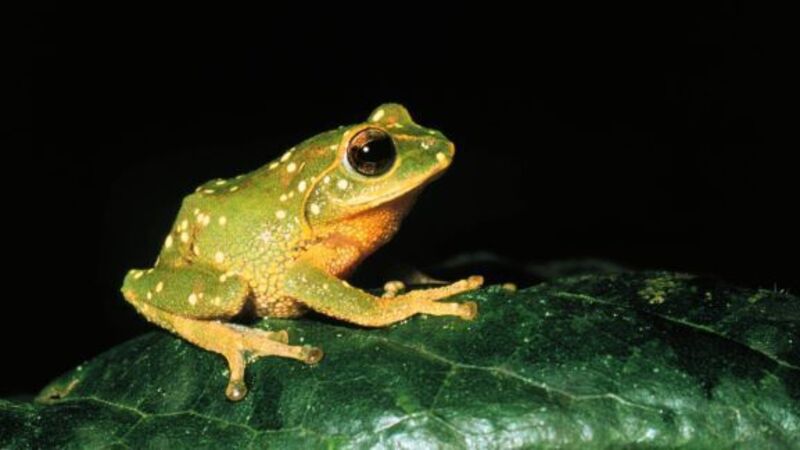Hop to it and help out frogs

Readers have been in contact to try to get a take-care message out to drivers. As this is breeding season for the slippery creatures — which are protected under the EU Habitats Directive and the Irish Wildlife Act — they are heading en masse to breeding sites.
When adult frogs emerge from hibernation, they migrate to congregate at these sites. They may travel up to a kilometre to find a site, where they gather in numbers. The males always arrive first and strike up a chorus of loud croaking to attract females. Both male and female frogs return to the same pond year after year.
Often, they cross roads on the way, so many never make the ponds. Road mortality is, however, just one of many threats facing Ireland’s frog population. More than 50% of their wetlands habitat has been lost to drainage, industrial peat extraction and pollution. Hedgerows are also being destroyed.
Exposure to chemical fertilisers, pesticides and herbicides can also kill frogs. Fire is a hazard, especially in dry, summer weather where accidental fires which can result in the loss of habitat. Another threat for the common frog is from burning of moorland.
Water polluted with heavy metals like aluminium, cadmium, zinc, copper and iron is toxic to frogs. Lead from car exhausts may also be toxic to them, according to the Irish Peatland Conservation Council (IPCC).
Yet, frogs can still be found countrywide. The first ‘Hop To It Frog Survey’ began in 1997 and was coordinated by the IPCC. The survey provided useful information on frogs distribution, habitats and breeding habits.
The survey has been continuing since 1997 and, by the end of 2011, the IPCC had more than 4,000 records from the 32 counties. Records show that frogs occur in the inner city (1%), city suburbs (17%) and the countryside (82%). Garden ponds are the most important habitats for breeding frogs, accounting for nearly 50% of all records received. Other key habitats are bog pools, ditches, drains and puddles.
Frogs feed on slugs, insects, worms, and spiders but not aquatic life. In winter, they hibernate under tree stumps, stacks of turf, or rock piles, where they stay until spring. People can help frogs in practical ways, such as by making a garden pond to encourage breeding, organise a clean-up of rubbish from local ponds and streams and taking part in the Hop To It Frog Survey online.
Check out www.ipcc.ie













